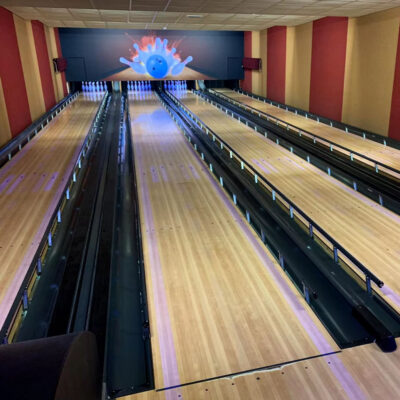1. The Foundation of Scalability in Bowling Business
Scalability in the bowling industry isn’t only about adding more lanes. It’s about optimizing flow, equipment lifecycle, and service consistency. Whether you’re building a new center or expanding an existing one, strategic planning ensures long-term profitability.
When sourcing materials and systems, partner with a reliable Bowling Equipment Wholesale provider who can guarantee consistent quality across large orders. High-grade materials and standardized lane configurations form the backbone of a scalable operation.
2. Determining Ideal Capacity: Start With the Numbers
Before construction begins, understanding your operational capacity is critical. Every decision—from the number of lanes to your customer turnover rate—impacts long-term ROI.
Key parameters include:
Lanes per square meter: Most modern layouts allocate 90–100 sqm for each pair of lanes.
Average frame duration: A standard game lasts 8–10 minutes per person.
Peak load management: Calculate maximum hourly throughput during weekends or league nights.
Break-even occupancy: Typically, 55–60% occupancy ensures profitability for most centers.
3. Lane Allocation and Space Efficiency
A well-structured bowling center balances gameplay comfort and profitability. Lanes that are too closely packed may reduce the experience; too wide, and your operational cost rises.
Use modular setups that allow you to expand later without redesigning the whole layout. Partnering with a professional Bowling Lanes Supplier helps ensure your design complies with international standards while maintaining expansion flexibility.
4. Machinery and Automation Considerations
Automated systems—such as ball returns, lane oiling machines, and scoring displays—are vital for scalability.
A center built around automation can:
Reduce labor dependency
Minimize downtime during peak hours
Maintain consistent customer experience
Additionally, choosing equipment with remote monitoring features enables preventive maintenance, saving time and reducing emergency repair costs.
5. Calculating ROI: From CapEx to Profitability
Return on Investment (ROI) in bowling centers typically balances between upfront capital costs (CapEx) and operational expenses (OpEx). To estimate ROI:
CapEx: Include lane construction, machinery, lighting, furniture, and audio-visual installations.
OpEx: Factor in electricity, oiling materials, staff salaries, and maintenance.
Revenue Streams: Game fees, rentals, pro-shop sales, food & beverage, and events.
Payback Period: Aim for a 4–6 year recovery window for medium-sized venues.
A scalable center maximizes per-lane revenue through optimized scheduling and diversified offerings like glow nights, leagues, and private bookings.
6. Operational Flow and Staffing
Efficiency extends beyond equipment. Staff movement, check-in flow, and service timing all impact capacity. Modern centers use self-service kiosks and POS integration to streamline check-in and billing.
For staffing, maintain a 1:4 ratio—one staff member for every four active lanes during off-peak hours—to control costs while maintaining service quality.
7. The Role of Equipment Lifecycle Management
The biggest mistake many new owners make is ignoring long-term maintenance. Each major equipment component (lanes, ball returns, pinsetters) has a predictable lifecycle that should align with your expansion timeline.
A simple rule:
Lanes: Replace or resurface every 7–10 years.
Machines: Overhaul every 4–5 years.
Shoes/Balls: Rotate inventory every 2 years to maintain customer satisfaction.
8. Expansion Planning: Start Small, Think Big
If you’re new to the industry, begin with 6–8 lanes and scale up once you reach 70% occupancy. Modular infrastructure allows new lanes, cafes, or event zones to be added with minimal downtime.
9. Sustainability and Energy Optimization
Energy-efficient systems are now a must-have, not an option. LED lighting, variable frequency drives (VFD) on motors, and optimized HVAC contribute to both environmental and financial savings. Green certifications can also boost your brand image, appealing to corporate clients for events and tournaments.
10. Marketing Leverage: Promote Scalability as a Strength
When communicating your expansion plan to investors or customers, highlight scalability as part of your value proposition. Customers trust venues that are continuously improving and adapting to new entertainment standards.
11. Final Thoughts
A scalable bowling center integrates smart space design, durable equipment, and energy-efficient systems. Working closely with trusted suppliers ensures that every upgrade supports your long-term ROI goals. Building scalability from the beginning means you won’t just survive market changes—you’ll thrive in them.
FAQs
Q1: What is the ideal number of lanes for a mid-sized bowling center?
Most profitable centers operate between 8–16 lanes, depending on market demand and location size.
Q2: How soon should ROI be expected for a new bowling center?
A 4–6 year payback period is typical when managed efficiently and partnered with reliable equipment suppliers.
Q3: Can scalability be applied to older bowling centers?
Absolutely. Retrofitting existing lanes with modular systems and digital scoring can significantly extend your center’s lifecycle.








